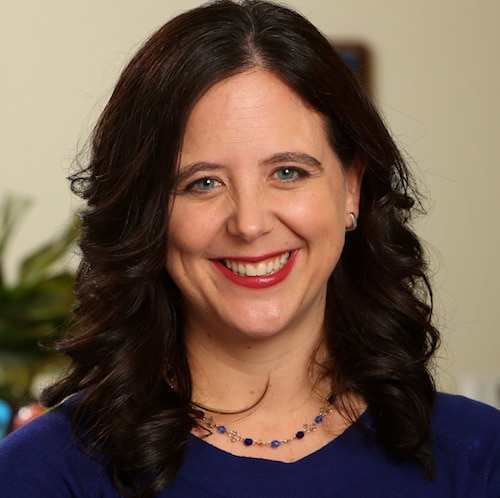New advances in cancer therapies have drastically improved the prognosis for children diagnosed with cancer. Forty years ago, children were only given a 58% chance of living 5 years after a cancer diagnosis. Today, that number as soared to over 80% of children surviving 5 years.[1] Children with cancer are living longer, and as a result, psychosocial issues such as quality of life and managing symptoms and side effects have become key priorities. Pain is one of the most difficult symptoms associated with a pediatric cancer diagnosis. In two separate studies, researchers asked children and adolescents with cancer, and their parents, to describe the most distressing aspects of their diagnoses. In both studies, children and their parents attributed their distress to the pain they experienced such as through their procedures and treatments.[2,3]
Melinda Marchiano, a teenage survivor of Hodgkin Lymphoma, courageously recounted her story as a childhood cancer patient in Grace: A child’s intimate journey through cancer and recovery.[4] Reading her memoir, one cannot help but identify the experience of pain as a recurring theme woven throughout her journey. From blood draws to injections, surgeries, port accesses, and chemotherapy, Melinda describes painful experiences as becoming part of her day-to-day life. Melinda is not alone in her experience of cancer-related pain; her story is one that is far too common amongst childhood cancer patients. Others have documented their experiences of pain throughout treatment and even into survivorship in blog posts, articles, and interviews. [5–7] The unfortunate reality is that pain is often viewed as an inevitable aspect of being a childhood cancer patient. But it doesn’t have to be.
Decades of research has been done on children’s cancer-related pain. For instance, advances have been made in ways in which clinicians can assess and manage cancer-related pain in children using both pharmacologic (e.g., medications) and non-pharmacologic (e.g., distraction, relaxation) methods. It is understood that most cancer-related pain can be effectively managed with a variety of techniques[8], yet, children with cancer continue to report pain throughout the course of their disease.[9] The problem is that much of the research on effective pain management never makes it into the hands of parents, who are becoming increasingly responsible for managing their children’s symptoms. We hope to change this and make sure that parents feel educated and empowered with the knowledge to manage their children’s cancer-related pain.
We are delighted to announce the launch of the “Making Cancer Less Painful for Kids” (#KidsCancerPain) campaign led by Dr Christine Chambers (IWK Health Centre, Halifax, NS, Canada) and Dr Jennifer Stinson (SickKids, Toronto, ON, Canada) funded by the Canadian Cancer Society. “Making Cancer Less Painful for Kids” is a 12-month social media campaign in partnership with the Cancer Knowledge Network, North America’s most widely read online cancer education resource. Together, with a team of internationally known health researchers, clinicians, patients, and supporting organizations, “Making Cancer Less Painful for Kids” will bring the very best research evidence on kids cancer pain directly into the hands of parents who can use it. The year-long campaign will feature content on various topics related to cancer pain such as: what causes it, how to assess it, ways to treat it, common myths and misconceptions and more. Content will be shared through videos, blog posts, social media images and twitter chats using the hashtag #kidscancerpain. The goal of the campaign is to translate science-backed evidence on cancer pain into easy to understand, practical, and accessible information that parents of children with cancer can access anytime, anywhere.
We need your help to make this campaign a success!
As part of the “Making Cancer Less Painful for Kids” campaign we want to hear directly from parents of children with cancer currently in treatment, remission or who are survivors about their children’s cancer pain experiences via an online survey. Parents have until July 20, 2016 to complete the survey and have a chance to win 1 of 3 $250 Visa e-gift cards.
Help us reach parents of children with cancer currently in treatment, remission or who are survivors by emailing, sharing and retweeting the following links to the survey within your networks and over social media:
Twitter: https://twitter.com/cancerkn/status/745638257094856705
Don’t forget to use the hashtag #KidsCancerPain!
Be sure to follow the Cancer Knowledge Network website, Facebook, and Twitter pages over the next 12 months to catch all of the “Making Cancer Less Painful for Kids” campaign. Our first set of content is set to launch on July 27, 2016! We’ll need your help to share our content within your personal and professional networks to make sure it reaches those need it. Over the next year we hope to start the conversation on the issue of cancer pain in children, and make it known that pain does not have to be an inevitable consequence of childhood cancer. Together, with your help, we will be, “Making Cancer Less Painful for Kids”.
About the Authors
Perri Tutelman
 Perri Tutelman is a PhD student in clinical psychology at Dalhousie University and the Centre for Pediatric Pain Research at the IWK Health Centre in Halifax, Nova Scotia, Canada. Her program of research is supervised by Dr. Christine Chambers and seeks to examine the parent and family experiences of pediatric pain. Perri is supported by a CIHR Canada Graduate Scholarship and Killam Predoctoral Award and she is a trainee member of Pain in Child Health: A Strategic Training Initiative of CIHR. Perri received her Bachelor of Health Sciences (Honours) degree from McMaster University in 2015.
Perri Tutelman is a PhD student in clinical psychology at Dalhousie University and the Centre for Pediatric Pain Research at the IWK Health Centre in Halifax, Nova Scotia, Canada. Her program of research is supervised by Dr. Christine Chambers and seeks to examine the parent and family experiences of pediatric pain. Perri is supported by a CIHR Canada Graduate Scholarship and Killam Predoctoral Award and she is a trainee member of Pain in Child Health: A Strategic Training Initiative of CIHR. Perri received her Bachelor of Health Sciences (Honours) degree from McMaster University in 2015.
Christine Chambers
 Christine Chambers is a clinical psychologist, Canada Research Chair in Children’s Pain, & Professor in the Departments of Pediatrics and Psychology & Neuroscience at Dalhousie University in Halifax, Nova Scotia. She is based in the Centre for Pediatric Pain Research at the IWK Health Centre. Dr. Chambers’ research examines developmental, psychological, and social influences on children’s pain, with a focus on family factors in pediatric pain and using social media to mobilize evidence-based information about children’s pain to parents. She is the Principal Investigator of the “It Doesn’t Have to Hurt” social media campaign in partnership with the Yummy Mummy Club.ca and “Making Cancer Less Painful for Kids” with the Cancer Knowledge Network.
Christine Chambers is a clinical psychologist, Canada Research Chair in Children’s Pain, & Professor in the Departments of Pediatrics and Psychology & Neuroscience at Dalhousie University in Halifax, Nova Scotia. She is based in the Centre for Pediatric Pain Research at the IWK Health Centre. Dr. Chambers’ research examines developmental, psychological, and social influences on children’s pain, with a focus on family factors in pediatric pain and using social media to mobilize evidence-based information about children’s pain to parents. She is the Principal Investigator of the “It Doesn’t Have to Hurt” social media campaign in partnership with the Yummy Mummy Club.ca and “Making Cancer Less Painful for Kids” with the Cancer Knowledge Network.
Jennifer Stinson
 Jennifer Stinson is a Nurse Practitioner in the Chronic Pain Program and the Mary Jo Haddad Nursing Research Chair in Child Health at SickKids and an Associate Professor in the Lawrence S. Bloomberg Faculty of Nursing at University of Toronto. Her lab – Improving Outcomes in Child Health (iOUCH) using technology focuses on the use of internet and smartphone applications to promote disease self-management in children and youth with pain chronic health conditions.
Jennifer Stinson is a Nurse Practitioner in the Chronic Pain Program and the Mary Jo Haddad Nursing Research Chair in Child Health at SickKids and an Associate Professor in the Lawrence S. Bloomberg Faculty of Nursing at University of Toronto. Her lab – Improving Outcomes in Child Health (iOUCH) using technology focuses on the use of internet and smartphone applications to promote disease self-management in children and youth with pain chronic health conditions.
References
[1] What are the key statistics for childhood cancer? [Internet]. American Cancer Society. 2016 [cited 2016 Jul 10]. Available from: http://www.cancer.org/cancer/cancerinchildren/detailedguide/cancer-in-children-key-statistics
[2] Hedström M, Haglund K, Skolin I, von Essen L. Distressing events for children and adolescents with cancer: child, parent, and nurse perceptions. J Pediatr Oncol Nurs Off J Assoc Pediatr Oncol Nurses. 2003 Jun;20(3):120–32.
[3] Hedström M, Ljungman G, von Essen L. Perceptions of distress among adolescents recently diagnosed with cancer. J Pediatr Hematol Oncol. 2005 Jan;27(1):15–22.
[4] Marchiano M. Grace: A Child’s Intimate Journey Through Cancer and Recovery. 2 edition. San Luis Obispo, CA: Happy Quail; 2010. 304 p.
[5] Heathcote L. Is pain always real? [Internet]. Oxford Today. 2015 [cited 2016 Jul 10]. Available from: http://www.oxfordtoday.ox.ac.uk/features/pain-always-real
[6] Jillian’s Story: Surviving B Cell Acute Lymphoblastic Leukemia [Internet]. Children’s Cancer Research Fund. [cited 2016 Jul 10]. Available from: http://www.childrenscancer.org/main/kids_stories/jillians_story_surviving_b_cell_acute_lymphoblastic_leukemia/
[7] No Fears, No Tears and No Fears, No Tears: 13 Years Later [Internet]. Crown House Publishing. [cited 2016 Jul 11]. Available from: https://secure.aidcvt.com/chp/ProdDetails.asp?ID=9781935810025
[8] Ventafridda V, Tamburini M, Caraceni A, De Conno F, Naldi F. A validation study of the WHO method for cancer pain relief. Cancer. 1987 Feb 15;59(4):850–6.
[9] Fortier MA, Wahi A, Bruce C, Maurer EL, Stevenson R. Pain management at home in children with cancer: a daily diary study. Pediatr Blood Cancer. 2014 Jun;61(6):1029–33.



